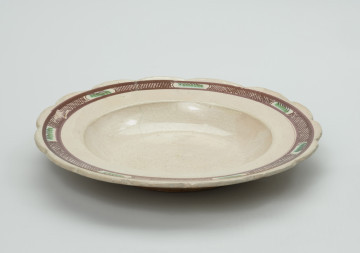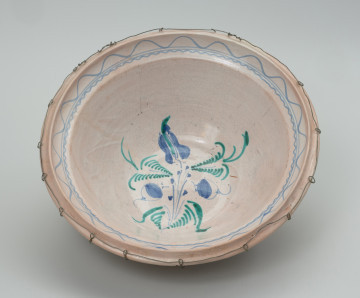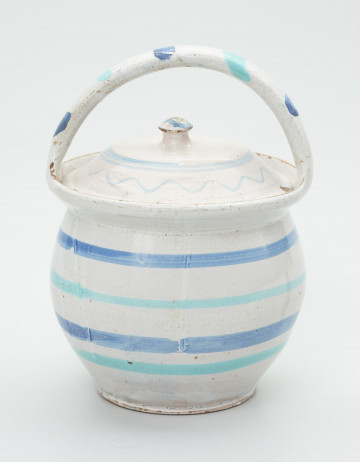
Plate
1791 — 1810
National Museum in Szczecin
Part of the collection: White ceramics from Szczecin
In Pomerania, flat vessels, i.e., plates and bowls, were coated with lead-tin glaze only on the face. That is one of their characteristic features, resulting from using an expensive raw material, which was white glaze. In the 18th and 19th century potters used lead, tin, sand, table salt, faience or glass fragments and even cattle blood. The production technology was complicated and its recipe was kept in secret by the master potter. Pottery production in Western Pomerania was carried out by numerous pottery workshops, which in the 1770s and 1880s functioned in more than 30 towns and cities. Their number increased significantly in the early 19th century, especially in Szczecin and its surroundings, when the city became the main port of the Prussian state. The surplus of white ceramic products, as the so-called ‘Szczecin's Ware’, was transported by sea to the centres located by the Baltic Sea and the North Sea. Successful development of ceramics with lead-tin glaze in West Pomerania had its source in the fashion for white products, which was brought in the 18th century by numerous settlers from the Netherlands and Friesland. The present plate is modestly decorated: on the bottom there is a stylised floral motif, on the rim of the spout there is a double, in some places careless, wobbly line. At the transition from the bottom to the body, there is an accidental drop of paint, which fell from a brush.
Iwona Karwowska
Author / creator
Dimensions
cały obiekt: height: 6 cm, diameter: 13 cm
Object type
plate
Technique
wheel throwing, glaze-coating, pottery
Material
ceramic, lead-tin glazing, copper oxide, cobalt oxide, alkaline glazing
Origin / acquisition method
legal transfer
Creation time / dating
Creation / finding place
Owner
Muzeum Narodowe w Szczecinie
Identification number
Location / status

1791 — 1810
National Museum in Szczecin

1801 — 1850
National Museum in Szczecin

1851 — 1900
National Museum in Szczecin
DISCOVER this TOPIC
National Museum in Lublin
DISCOVER this PATH
Educational path